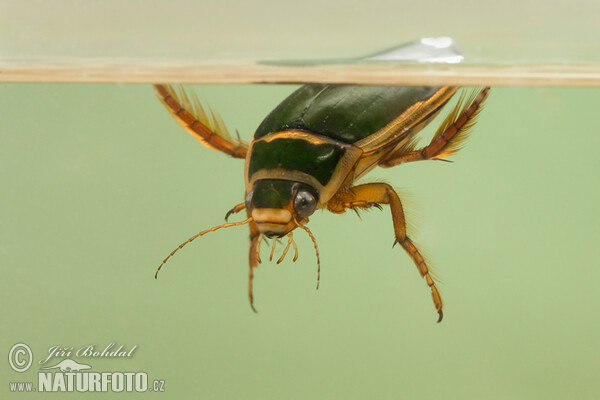WATER BEETLES!
As we have talked about in class
before, the order Coleopteran is the largest and most diverse family in all of
the animal kingdom, with this large extent of diversity within the family there
are is an array of ecosystems and habitats that coleopterans can survive in,
this includes both terrestrial species as well as aquatic species in both
larval and adult stages. Coleopterans
that live in these aquatic situations are commonly known as, “water beetles”. There are estimated to be over twenty four
thousands species of beetles, and that’s only in North America! Of those twenty
four thousand, roughly one thousand of those coleopterans are aquatic beetles,
considering that they live there adult stage aquatically, like other insects a
large amount of coleopterans larvae are aquatic yet this doesn’t mean they are “aquatic
beetles”.(Voshell) All water beetles go
through complete metamorphosis, as we all should know this means the insect has
a larval, pupal, and adult stage in which the insect looks very different in all
three different stages. One interesting thing that most people wouldn’t know is
that water beetles actually spend their pupal stage terrestrially. (Voshell)

Image by: Google Images By nature photos. com
As most
beetles are, these little things are very adaptable to different situations;
water beetles can live in many different aquatic habitats, ranging from very
fast moving small bodies of water, to very large still water habitats. (Voshell)
Another way water beetles have become so diverse in all these different
habitats is there long lists of different eating habits in these different
habitats. Dr. Voshell Jr. and J. Reese
list some of these different eating habits of water beetles in their book “A Guide
To Common Freshwater Invertebrates of North America”
Crawling water
beetles: Mostly herbivorous in nature, feed by shredding and sucking
nutrients from aquatic plant life.
Predacious diving
water beetles: These water beetles account for about 500 of the one
thousand water beetle species in North America, mostly found in still standing,
smaller bodies of water, such as ponds,
yet some may be found in small, slow moving streams throughout the country.
These beetles create an air bubble on their abdomen and head and use this to be
able to dive into the water and, at adult stages, use its chewing mouthparts to
kill and digest prey. The larvae of this
species usually “stick” prey and ingest its nutrients that way.
Riffle Beetles: This
species of beetle tend to feed on plant life such as moss on rocks or all
different types of debris. These beetles are mostly found in fast moving
streams or by the banks in a still water habitat where there is more movement
than normal. (These are the beetles you
usually see when fishing off a bank making all the “ripples” by the bank, they
usually travel together)
Water Penny Larvae: Before
reading the exert from the exert I had no idea what these where, but these
young larvae of a water beetle can be found on rocks scraping off the algae
from the surface to obtain its nutrients. They can usually be found in moderate
to fast moving water, these actually spend a large amount of time out of the
water as adults……. Amphibious insects are awesome.

These are just a very select few of
the feeding habitats and different types of water beetle that can be found in
North America, like stated previously there are close to one thousand species
in North America.
One thing I found interesting,
after researching, I couldn’t find any medical or ecological uses that
scientists use these water beetles for. I’m sure Dr. Hoek has some he could
share with us.
Sources
Voshell, Jr., J. Reese;
illustrated by Amy Bartlett Wright. 2002. A Guide to Common Freshwater
Invertebrates of North America. Blacksburg (VA): The McDonald & Woodward
Publishing Company. 442 p.


Comments
Post a Comment